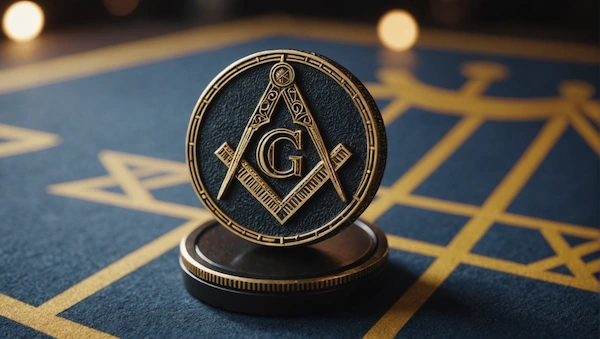
Motivations Behind the Desire to Communicate With the Dead
Grief and the Quest for Closure
At the core of many individuals’ desire to communicate with the deceased lies the experience of grief—a complex emotional process characterized by yearning, disorientation, and the search for meaning in loss. Elisabeth Kübler-Ross’s pioneering work on grief identified stages including denial, anger, bargaining, depression, and acceptance—a framework that helps illuminate how seeking contact with the deceased might fulfill different psychological needs at different stages of bereavement.
Contemporary grief theory has evolved beyond Kübler-Ross’s linear model toward a “continuing bonds” perspective, which recognizes that healthy grieving often involves maintaining transformed relationships with the deceased rather than severing attachments. Medium readings and other forms of spirit communication can facilitate this process by providing frameworks for ongoing connection that honor both the reality of physical absence and the persistence of emotional bonds.
Personal narratives of those seeking medium readings frequently reveal the poignant need to resolve unfinished conversations, express unspoken sentiments, or receive forgiveness. The phenomenon of “last words” holds particular significance across cultures precisely because humans intuitively recognize the finality of physical communication, creating a profound need for channels that extend beyond bodily limitation. Medium readings can provide symbolic closure when physical closure was impossible—particularly in cases of sudden death, estrangement, or when final communications were impaired by illness.
Research by psychologists Kenneth Doka and Terry Martin on “disenfranchised grief”—grief that is socially invalidated or unacknowledged—illuminates why some individuals turn to spirit communication when conventional support systems prove insufficient. When relationships were complicated, stigmatized, or hidden, traditional mourning rituals may feel inadequate, creating space for alternative approaches to processing loss and maintaining connection.
Spiritual Seeking and Exploration of Existence
Beyond grief resolution, many approach spirit communication as part of broader metaphysical exploration—a means of investigating consciousness itself. This motivation often emerges from transformative experiences that challenge materialist paradigms, including near-death experiences (NDEs), spontaneous mystical states, or profound synchronicities that suggest reality exceeds conventional understanding.
Those engaged in spiritual seeking through mediumship frequently report evolutionary journeys that begin with specific communications but expand toward deeper questions about the nature of consciousness. The evidence suggesting consciousness might transcend physical death—including verified mediumship readings, children’s memories of previous lives, and terminal lucidity in dementia patients—offers provocative challenges to reductionist models of mind, inviting deeper philosophical inquiry.
Modern technologies have democratized access to information about consciousness studies, alternative cosmologies, and practical techniques for developing mediumistic abilities. Online communities provide spaces where spiritual seekers can share experiences, compare notes on different methodologies, and develop practices including meditation, journaling, and dreamwork aimed at facilitating communication with discarnate entities. This represents a significant shift from earlier periods when such knowledge remained the province of specialized institutions or teachers.
Risks Involved in Communicating With the Deceased
Psychological and Emotional Risks
While spirit communication can facilitate healing and provide meaningful metaphysical insights, it carries significant psychological risks, particularly when pursued from positions of acute vulnerability. Unresolved grief can create susceptibility to exploitative practices or self-deception, with individuals potentially bypassing natural healing processes in favor of artificial maintenance of pre-death relationships.
The psychological concept of “complicated grief” illuminates situations where spirit communication might impede rather than facilitate healing. When individuals become fixated on maintaining contact with the deceased, they may resist forming new attachments or addressing the fundamental reality of physical absence. This can lead to what psychiatrists identify as “persistent complex bereavement disorder,” characterized by intense yearning, preoccupation with the deceased, and functional impairment extending beyond typical grieving periods.
Carl Jung’s exploration of the unconscious offers valuable perspectives on how communications ostensibly from deceased loved ones might sometimes represent projections of the psyche. Jung’s concept of the “autonomous complex”—aspects of the unconscious that can appear to operate independently—helps explain how genuine psychological phenomena might be misattributed to external spirits. This possibility requires neither dismissing all spirit communications as illusory nor accepting all as authentic, but rather maintaining discernment about the complex interplay between inner and outer realities.
The phenomenon of dissociation, where individuals disconnect from immediate reality, can become problematic when spirit communication sessions trigger dissociative states that persist beyond ceremonial contexts. Particularly for individuals with histories of trauma or dissociative tendencies, practices that deliberately alter consciousness may require additional safeguards and integration support from qualified mental health professionals who understand both psychological and spiritual dimensions.
Spiritual Risks: Demonic Presence and Deceptions
Across diverse spiritual traditions, warnings about deceptive entities accompany teachings about spirit communication. These traditions recognize that openness to genuine communication requires vulnerability—creating potential for exploitation by what various frameworks identify as lower astral entities, trickster spirits, or demonic presences.
Catholic theology explicitly cautions against necromancy, citing biblical injunctions and emphasizing that entities encountered might not be who they claim. The rite of exorcism exists precisely because the tradition recognizes the potential for malevolent spiritual influence. Similarly, indigenous traditions worldwide maintain protective protocols around spirit communication, including purification rituals, protective circles, and the guidance of experienced practitioners who can discern beneficial from harmful entities.
The concept of “spiritual discernment”—the ability to distinguish authentic spiritual communications from deception or projection—appears across traditions. In Christian mysticism, it involves testing spirits against established doctrine and examining fruits of the interaction. In Spiritualist traditions, it includes evaluating whether messages contain verifiable information unavailable to the medium and whether communications promote spiritual growth or dependency.
Some spiritual traditions warn specifically about entities that masquerade as deceased loved ones to gain influence or energy from the living. These “trickster spirits” may provide initially convincing communications containing accurate personal details, only to gradually introduce deceptive or harmful content. Protective practices across traditions share common elements: establishing sacred space through ritual boundaries, invoking protection through prayer or visualization, maintaining grounded awareness during altered states, and integrating experiences through community discernment rather than solitary interpretation.
Conclusion: A Journey of Connection and Caution
The desire to communicate with those who have passed away represents one of humanity’s most profound expressions of transcendent longing—a refusal to accept that physical death severs the bonds of love, memory, and meaning. From ancient ancestral veneration to contemporary mediumship, these practices reflect our intuitive recognition that consciousness may extend beyond material boundaries, challenging simplistic notions of identity and mortality.
This exploration reveals both the universal aspects of spirit communication—present across cultures and epochs—and its diverse expressions shaped by philosophical frameworks, cultural contexts, and individual needs. Whether approached as grief resolution, metaphysical inquiry, or spiritual practice, communication with the deceased involves fundamental questions about the nature of consciousness, identity, and reality itself.
The risks accompanying these practices demand neither blanket dismissal nor uncritical acceptance, but rather thoughtful engagement with both psychological and spiritual dimensions. Approached with discernment, ethical consideration, and appropriate guidance, spirit communication can potentially offer healing connections and expanded understanding. Yet these same practices, undertaken without proper preparation or from positions of extreme vulnerability, may lead to dependency, deception, or spiritual harm.
As individuals navigate their personal relationships with mortality and loss, the varied traditions of spirit communication offer frameworks for maintaining meaningful connections while honoring the reality of physical transition. By acknowledging both the profound human need for continued connection and the complexities inherent in bridging worlds, we can approach this ancient practice with the wisdom it deserves—recognizing that how we relate to death profoundly shapes how we experience life itself.
<< Back to Part 1
ARE YOU IN THE WORLD OR OF THE WORLD?
Review the following statements and check the ones you agree with and consider best aligned with your perspective.
Count the number of selected boxes and read the associated profile.
0: Most likely you are passing through IN the world
1-2: One part of you belongs to the world, another part does not
3-4: You almost certainly belong to the world
5-6: You belong to the world, or rather, you are OF the world





